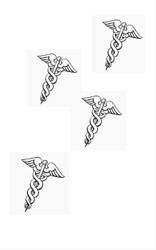
By KIM BELLARD
I’m always on the lookout for advances in healthcare that seem more like 22st century medicine than what we still experience in 2025. Way too much of it seems less advanced than we should be expecting in a world of AI, genetic engineering, nanobots, and the like. I often think of the scene in Star Trek IV where Dr. McCoy finds himself in a 20th century hospital and is appalled:
So I’m pleased to report on a couple of developments that seem like the future.
Transcranial ultrasound stimulation (aka “ultrasound helmet): You may not have ever heard of deep brain stimulation, unless you know someone who has advanced Parkinson’s, dystonia, essential tremors, or epilepsy. It turns out that electrical impulses to certain parts of the brain can help reduce the involuntary motions these conditions can result in.
The drawback is that deep brain stimulation is delivered by electrodes implanted deep in the brain. While this may not be quite as daunting as it sounds, people are still, you know, drilling holes in your head and pushing electrodes into your brain. You can imagine Dr. McCloy’s reaction.
Enter transcranial ultrasound stimulation. A new paper in Nature from researchers at University College London (UCL) and Oxford describes using a 256 element helmet to precisely aim ultrasound waves to accomplish the same results.
Our findings reveal this system’s potential to non-invasively modulate deep brain circuits with unprecedented precision and specificity, offering new avenues for studying brain function and developing targeted therapies for neurological and psychiatric disorders, with transformative potential for both research and clinical applications.
Professor Bradley Treeby, senior author of the study from UCL Medical Physics and Biomedical Engineering, said:
Clinically, this new technology could transform treatment of neurological and psychiatric disorders like Parkinson’s disease, depression, and essential tremor, offering unprecedented precision in targeting specific brain circuits that play key roles in these conditions.
The ability to precisely modulate deep brain structures without surgery represents a paradigm shift in neuroscience, offering a safe, reversible, and repeatable method for both understanding brain function and developing targeted therapies.
Continue reading…














